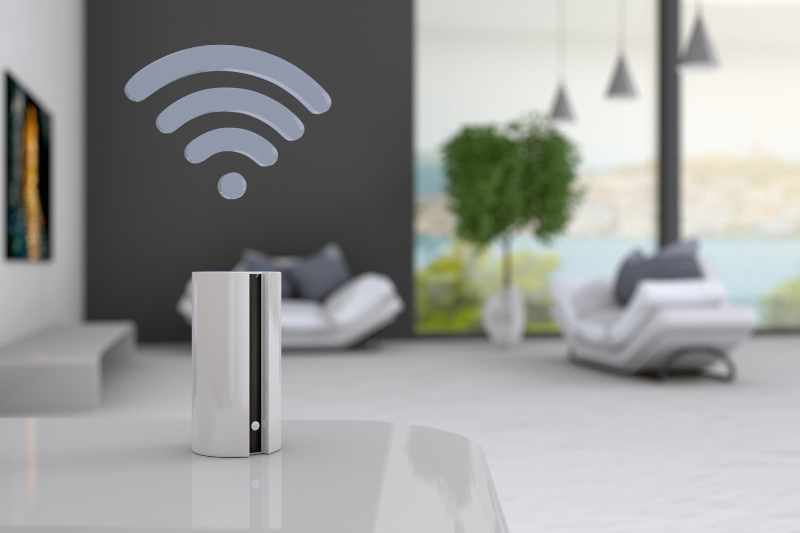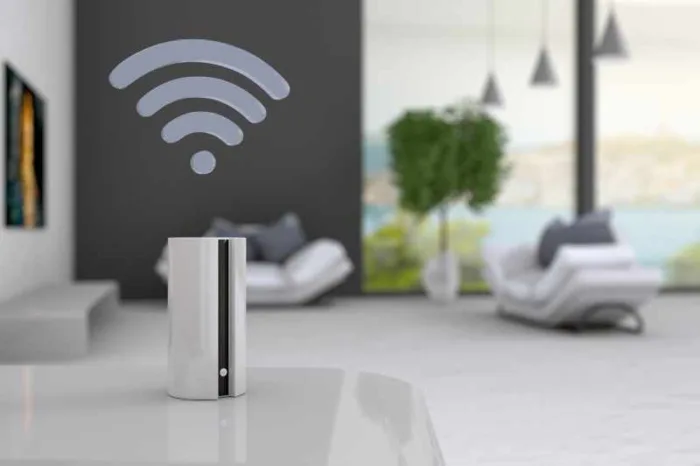Key takeaways
- Intelligent buildings use advanced technologies like AI and IoT sensors to improve energy efficiency, security, and comfort.
- Real-world examples such as The Edge and Bullitt Center showcase the effectiveness of intelligent building technologies in achieving sustainability and efficiency.
- Essential technologies for creating smart buildings include building management systems, smart thermostats, access control, and more.
- Intelligent building technologies can significantly reduce energy consumption, streamline building operations, and improve employee performance.

As technology advances, so will our lives and the environment. One place we can witness these technological advances is in property technology (proptech). Today, the rise of intelligent buildings, also called smart buildings, is thanks to the development of technologies that make it easier to live and work in buildings throughout our communities.
Therefore, we’ve created this guide to help you better understand how intelligent buildings are shaping the future. We’ll cover what these buildings are and what features make them what they are. In addition, you’ll discover real-world examples of intelligent buildings and what tech you can implement to turn your building smart.
This post covers:
- What is an intelligent building?
- Qualities of intelligent buildings
- Intelligent building examples
- 7 best intelligent building technologies
What is an intelligent building?
An intelligent building is a structure that uses smart building technology to efficiently manage building operations through automated processes, such as heating, air conditioning, ventilation, lighting, security, and more.
Intelligent building solutions blend IoT-connected technologies — from smart access control systems to HVAC systems and everything in between — to automate day-to-day operations. As a result, these buildings create more comfortable, sustainable, and secure environments for building occupants.
What are the objectives of intelligent buildings?
The objectives of intelligent buildings are to reduce energy consumption, enhance security, and create comfortable environments to boost occupant well-being and productivity. In addition, these systems hope to streamline building operations by automating tasks and providing greater insight into the building’s systems.
Qualities of intelligent buildings
All intelligent buildings encompass similar qualities thanks to their advanced technology and common goals.
Here are the most prominent qualities or features of intelligent buildings:
- Optimized maintenance. Intelligent buildings prioritize preventative maintenance by monitoring systems and recommending minor repairs or upkeep before major problems arise. Therefore, you can reduce repair costs and prevent long downtimes.
- Energy efficiency. Smart buildings reduce energy consumption and optimize usage, reducing operational costs and environmental impact.
- Sustainability. Built from eco-friendly materials and practices, intelligent buildings are better for the environment. They are also energy efficient, reducing their carbon footprint.
- Automated systems. Advanced systems automate building operations such as HVAC, lighting, and security, reducing tedious duties and creating efficiency.
- Data-driven insights. The systems of smart buildings collect data from a wide array of areas, enabling you to review actionable insights for operations and maintenance.
- Scalability. Easily adapt and expand your system as your building needs it through seamlessly integrated technology.
- Connectivity. Intelligent buildings use IoT technologies to interconnect systems, ensuring clear communication across all devices.
Learn how to automate your office building:
Intelligent building examples
While intelligent buildings are not ubiquitous, there are many real-world examples we can examine. Below, you’ll find some of the most successful intelligent buildings in the world.
Here is a list of intelligent buildings in the real world as examples:
- One Angel Square, Manchester, UK
- Bullitt Center, Seattle, WA
- Capital Tower, Shanghai, China
- The Edge, Amsterdam, The Netherlands
- Council House 2 (CH2), Melbourne, Australia
One Angel Square, Manchester, UK
Completed in 2013, One Angel Square is the headquarters of the co-operative Group and is renowned for its sustainability credentials. It features a double-skin facade for thermal efficiency, natural ventilation, and a combined heat and power (CHP) plant that runs on biofuel. The building achieved a BREEAM ‘Outstanding’ rating and is designed to be one of the most energy-efficient office buildings in the world.
Bullitt Center, Seattle, WA
The Bullitt Center finished construction in 2013 and is known as the greenest commercial building in the world. It aims for a 250-year lifespan and uses a rooftop solar array to generate all its electricity, has a rainwater-to-potable water system, and has a composting toilet system. Moreover, the building adheres to the rigorous Living Building Challenge standards, emphasizing sustainability, energy efficiency, and a low carbon footprint.
Capital Tower, Shanghai, China
Capital Tower integrates intelligent building management systems that efficiently control HVAC, lighting, and other operations. Its smart façade optimizes natural light and reduces heat gain, significantly contributing to energy savings. The building’s design incorporates modern technology to ensure operational efficiency and comfort for occupants, reflecting advancements in smart building design since its construction in 2000.
The Edge, Amsterdam, The Netherlands
The Edge, often cited as the world’s smartest building, houses Deloitte’s headquarters in Amsterdam. Built-in 2014, it boasts an extensive array of sensors that monitor lighting, temperature, and occupancy and uses a smart energy management system to optimize energy consumption. The building’s atrium allows natural light to flood the interior, and its north-facing side is covered in solar panels. The Edge achieved the highest BREEAM sustainability score ever awarded.
Council House 2 (CH2), Melbourne, Australia
Council House 2, a pioneering sustainable building, integrates smart technologies such as advanced HVAC systems, phase change materials for thermal energy storage, and a building management system that adapts to environmental conditions. Additionally, it features recycled materials, a facade with louvers that adjust to sunlight, and blackwater recycling. CH2 was the first building in Australia to receive a 6-star Green Star rating from the Green Building Council of Australia, setting a high standard for sustainable architecture. It finished construction in 2006.

7 best intelligent building technologies
To help you transform your property into an intelligent building, we’ve compiled a list of seven essential technologies. These options will enhance efficiency, security, and comfort in your building.
If you want to turn your building smart, here are the best technologies to start with:
- Building management system (BMS)
- Artificial intelligence
- Access control
- Smart thermostats
- Energy management systems (EMS)
- IoT sensors
- Smart lighting
1. Building management system (BMS)
A building management system (BMS) is the backbone of most smart buildings. It integrates and controls nearly all aspects of a building, from HVAC and lighting to power and security. A BMS optimizes building performance by centralizing management to these systems to reduce entry consumption and improve maintenance efficiency. More importantly, BMS platforms provide you with live data and analytics to make more informed decisions regarding building operations.
2. Artificial intelligence (AI)
Artificial Intelligence has boomed over the last few years, and it’s only just the start. AI significantly impacts building management by enabling predictive maintenance, energy optimization, and personalized occupant experiences.
In other words, AI algorithms analyze data from building systems to identify patterns and predict equipment failures before they occur. In turn, you reduce equipment downtime and maintenance costs. Additionally, AI can learn and adapt to occupants’ preferences, adjusting lighting, temperature, and other settings to enhance comfort while maximizing energy efficiency.
3. Access control
Access control systems enhance building security and streamline entry management. For example, ButterflyMX offers a mobile-based access control solution that allows residents and tenants to open doors and gates with their smartphones.
This system can also grant temporary access to visitors and service workers, track entry logs, and integrate with other building systems for a seamless user experience. In addition, ButterflyMX offers a property-wide solution so that you can manage access throughout your property, no matter the entryway or area.
Therefore, you can improve your property’s security, convenience, and operations.
4. Smart thermostats
Smart thermostats are a simple yet powerful tool for enhancing energy efficiency and occupant comfort. These devices learn user preferences and occupancy patterns to automatically adjust heating and cooling settings.
Smart thermostats can be controlled remotely via mobile apps, allowing users to manage their environment from anywhere or automatically by a BMS. Regardless, expect them to provide detailed energy usage reports, helping building managers identify opportunities for further efficiency improvements.
5. Energy management systems (EMS)
Energy management systems monitor and optimize energy consumption across the building. This system is often built into your BMS, but it isn’t always. An EMS tracks energy usage in real time, identifying inefficiencies before implementing energy-saving measures.
Furthermore, EMS can integrate with renewable energy sources, such as solar panels, to maximize their use and reduce reliance on the grid. Overall, an EMA helps building managers make informed decisions to reduce costs and environmental impact through detailed insights into energy consumption.
6. IoT sensors
Internet of Things (IoT) sensors collect real-time data on various building parameters, such as temperature, humidity, occupancy, and lighting levels. Then, they communicate with the building management system to make appropriate adjustments. The data is crucial for optimizing building operations and enhancing occupant comfort.
For instance, IoT sensors can trigger automated responses, such as adjusting HVAC settings or turning off lights in unoccupied areas, to improve energy efficiency. They also provide valuable insights for predictive maintenance and facility management.
7. Smart lighting
Smart lighting systems use automated controls to adjust lighting based on occupancy and natural light availability. These systems reduce energy consumption by ensuring lights are only on when needed and dimming or turning off lights in response to daylight levels.
In addition, smart lighting can be customized to create optimal lighting conditions for different tasks and times of day, enhancing occupant comfort and productivity. To further improve overall building performance, integrate smart lighting with other systems via your BMS.







